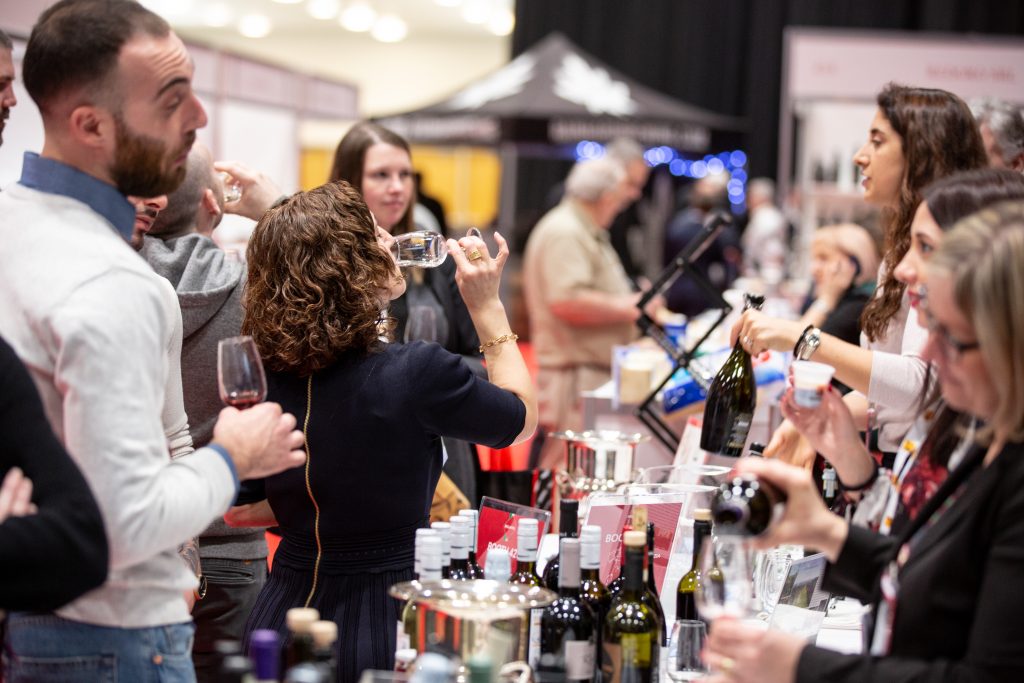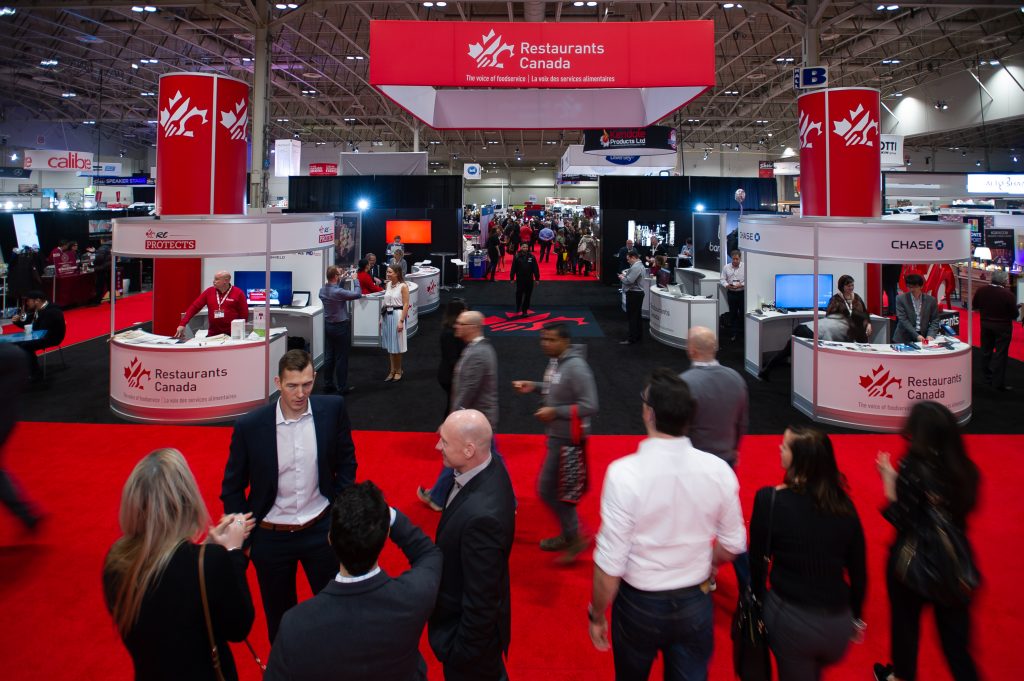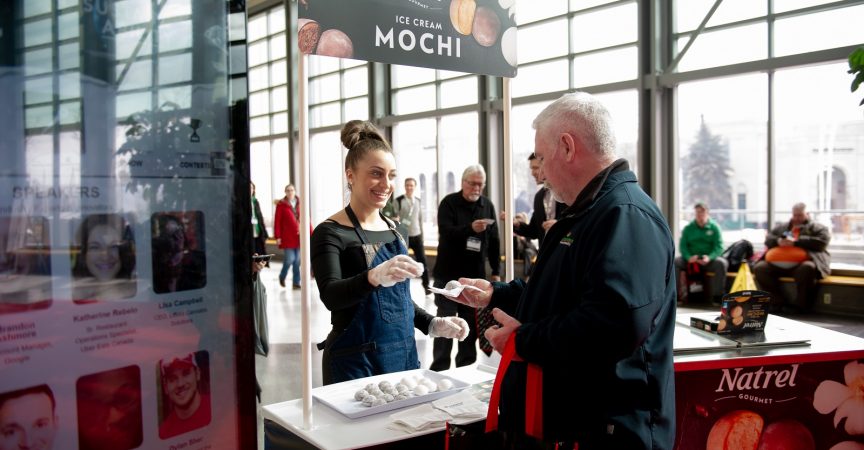Boost Your Booth and Your Sales: A strategic approach to exhibit marketing
“Brand experience” isn’t a buzzword, it’s a necessity for excelling at any trade show. More than two-thirds of marketers agree that brand experience is an effective way to reach their organization’s goals — including generating leads, growing brand advocacy, making customers feel valued, and (most important of all) increasing sales.
So why do so many exhibitors remain incumbent upon the standard table, drape, and free pen paradigm? As an exhibitor, your company stands to benefit from three major value drivers of an event: building connections, increasing exposure, and influence and generating sales. To maximize your returns, it’s imperative to design a powerful brand experience in your exhibit booth. But it’s not something that “just happens” – it’s deliberate.
This article is a strategic guide to exhibiting, keep reading to get insights on:
- Aligning your organizational goals with exhibit objectives and tracking results
- Understanding your audience, their motivations and how to earn engagement
- Maximizing your resources through staffing appropriately to tips on building an exhibit that works as hard as you do
- Best practices for connecting with your audience before, during and after the show
As a bonus, we will also be providing a complimentary webinar on boosting your booth (and your sales). Head over to secure your spot now! Be sure to register even if you can’t make the date as you will receive the presentation deck and recording post-event.
Your WHY Determines Your HOW
It’s obvious that a well-defined strategy is necessary for your business in the marketplace, but the same is true for success on the show floor. As an exhibitor, it’s tempting to hit the ground running, checking the boxes off on to-do lists, tactics, deadlines, staffing and more. However, take a step back from focusing on the how and begin with the big picture. Your overarching business objectives should serve as the foundation for all you do on the show-floor too.

Business Goals:
To determine these, you may ask yourself and your team the following questions:
- What is your company’s vision?
- What are the top 3 overall goals for the business?
- What does your marketing program need to accomplish?
- How can a brand experience help you get there?
Event Objectives:
Next, consider which particular exhibition objective(s) have the potential to contribute most towards your overall business goals.
Here are just a few examples:
- Raise brand awareness
- Launch new initiatives
- Enhance brand perception
- Generate leads or grow your pipeline
- Launch new products
- Maintain (or defend) key client relationships
- Make more connections in your industry
- Educate clients on new products or features
After aligning your approach and selecting your top event objective(s), ensure that your goals are specific, measurable, and timely. One way to do this is by looking at your audience and how you’re tracking the success of your efforts. Here, we breakdown the questions you should be considering.
Audiences:
Be as specific as possible about who you’re intending to reach through exhibiting by walking through these points:
- What attendee segment(s) are your target market?
- What products / services fill their needs?
- What solutions do they need most and are you using that in your marketing?
- What experience would influence them and move the needle on connection at the show?
Measurement:
It’s not only important to track your efforts to see which areas you excelled in most, it’s a key component to understanding your return on this show. This information allows you to plan optimizations to your tactics the following year or even compare which expos are most beneficial to participate in if your exhibiting at multiple events. Consider the following to arrive at an optimal approach to exhibit campaign metrics:
- How will you determine if your exhibit and marketing efforts played a factor in creating more success for your business?
- Identify any key performance indicators (KPIs) you want to track and how to accurately do so.
- During this planning phase be sure to set a deadline to review these results after the show.
Spend Your Resources Wisely
Now that you’ve established your why, you can dig into the how of your strategic marketing plan by looking at what you have available to invest. In determining your budget for the expo it’s important to consider all aspects of the exhibit ecosystem from your exhibit real-estate and booth property, to the content offering and staff needed. By walking through each of the major components of the ecosystem below and noting what feels most appropriate for your company, you’ll be able to make key decisions on budget allocations.

Property:
Will you use an existing, rental, or custom booth property— or some hybrid? Does your booth embody your brand attributes? Is the messaging concise and impactful?
Configuration:
What size and floor plan will help you meet your show objectives? For instance, if focused on promoting a new product, set aside dedicated space for demos.
Staff and space:
Calculate your total addressable audience and the number of staff needed to meet your booth traffic demands. Then, allot “working space” for those sales interactions to take place, in addition to your occupied space (booth property, product displays storage).
On-site amenities and requirements:
It’s critical to know all your options before building out your booth. For example, the show might on-site meeting rooms, so you might not need to incorporate that inside your booth. Be sure to review the show’s booth guidelines to ensure you’re within the physical requirements too.
Sponsorships:
Define how the promotional goals for each sponsorship opportunity align with your organization’s goals. Are you looking to increase booth traffic, brand visibility or perceptions? This is a great way to extend your efforts beyond the edge of your booth.
Attracting Buyers to Your Booth
With your business and marketing objectives aligned and many of your major financial decisions complete, it’s time to dig into pre-show marketing and advertising. To effectively reach your targets, it’s necessary to identify them and what they’re after.

Target Market:
Reference the specific attendee audience segments you defined just a moment ago and prioritize them if need be. Use messaging that matters to them in your pre-show marketing appeals and be sure to enticing them with a reason to seek out your booth.
Motivations:
Attendees may be looking to use the in-person sales environment to address their business needs, learn about new products, or ask technical questions pertaining to what they currently use. Others might be hoping to make purposeful connections.
How does exhibit facilitate these things? While most exhibitors staff the booth with sales and marketing personnel, attendees place a high value on talking to executive/management and technical experts extremely favourably.
Agendas:
The Center for Exhibition Research reports as many as 75 per cent of attendees come with an agenda. Their pre-show planning may include researching products, exhibitors to visit, setting up meetings, and identifying educational opportunities to attend. This means that in order to draw people’s attention to your presence, you should begin your efforts as early as six months prior to the show.
Information:
How does your audience like to learn? Would they be more likely to read a blog, or engage with you on social? What media or online trade publication sites do they frequent?
At the event, are they more likely to consume information via an interactive digital display or would they rather be handed a printed brochure?
CEIR reports that 67 per cent of attendees would like to learn about a product in an experiential way (i.e. gamification or virtual reality) however only seven per cent of exhibitors are utilizing this tactic.
Given that two-thirds of attendees are pre-planning, it’s remarkable that only 10-15 per cent of exhibitors actually invest in pre-show marketing but those that do see an average increase of 50 per cent in leads from the expo.
An integrated marketing plan uses clear and consistent communications across channels to effectively reinforce your message and create a synergistic effect. The average person is exposed to about 5,000 ads per day, meaning the competitive landscape is an uphill battle for marketers across channels and devices.
Ensure relevance through targeting strategies and through distinctive creative and copy that demonstrates why an attendee would find value in your brand and meeting you at the show.
Design a Memorable In-Booth Experience
Whatever its size, your booth should tell a seamless brand story. Circle back to your brand and event objectives and translate those intentions into demonstrations and activities that will encourage attendees to enter your exhibit, engage and create a personal connection with your staff.

You only have a few seconds to grab your prospects’ attention, if you don’t captivate them, someone else will. There are three pillars of exhibit engagement that you need to reference and keep top of mind when thinking about your booth experience:
Attract:
Appeal to the senses with color, light, sound, smell or taste to draw your audience in from across the aisle.
Hold:
Hold your visitors with relevant messages that speak to their needs or challenges. Offer an engaging experience. By cultivating curiosity, joy, competition, or learning, you’ll earn their presence.
Close:
After genuinely participating in an activation, strike up conversation to see if there’s anything your team can help them with immediately or make a plan to stay connected.
Booth activities that successfully drive traffic all boil down creating an experience for your visitors. For example, a demo or unveiling of a new product can facilitate a feeling of discovery and excitement. An influencer or expert appearance can be effective because it lends exclusive exposure to someone who is otherwise inaccessible. Generate smiles, spark positive energy, or activate desire through photobooth opportunities, contests, or giveaways.
Virtual reality and gamification are immersive experiences that have a high aptitude for learning and are often underutilized by exhibitors. For example, let’s say your company is a whiskey brand with a rich heritage story from Ireland. What better way to bring that story to the show with an immersive, 360-degree video tour of your plant using VR goggles? Or, if you have a flair for the creative – take attendees on an animated VR journey through the lense of wheat grains undergoing fermentation, being poured into oak barrels, rolled onto trucks and finally making their way into a shot glass. This connects your customers to the history and craftsmanship of your brand in a new and engaging way.
Whatever your in-booth approach is, make sure it rolls up to your exhibit objectives and the corresponding KPIs.
Post-show Work Pays Real Dividends
The crowds have gone home, doors have closed, and exhibits have been dismantled. But there’s much to be gained in following through with contacting leads post-show and debriefing with your team to review the success of your objectives.
Nearly 75 per cent of leads are not followed-up on according to InsideSales.com. A primary reason for this is that most exhibitors fail to create a follow-up plan prior to the show. By not determining a methodology or having marketing materials prepared prior to event, they lose valuable time and efficiencies with this qualified audience.
Be sure to include this crucial step in your pre-show planning to maximize your tradeshow results and close more sales. Have a post-show email written and ready to send, welcoming booth visitors’ home and recapping your key messages with a call to action for next steps. We recommend making contact within 48 hours of the show closing, while the conversations are still fresh in their mind and continue the conversation seamlessly. With 35-50 per cent of sales going to the exhibitor that responds first, why not get proactive and provide the convenience of reaching out first.
Exhibiting at a trade show can be incredibly lucrative for a brand and puts your business in a position to succeed. For foodservice operators, there is no better place to be than Canada’s leading food, beverage, and hospitality – RC Show 2020.
If you’d like to take a deep dive into exhibiting with an expert, join our webinar on ‘Boosting your Booth (and your sales) on Wednesday, Dec 4, 2019 2:00 PM – 3:00 PM EST.
We’ll shed even more light on the topic, answer any questions your may have, and you’ll receive an exclusive RC Show 2020 resource bundle including worksheets and checklists.









